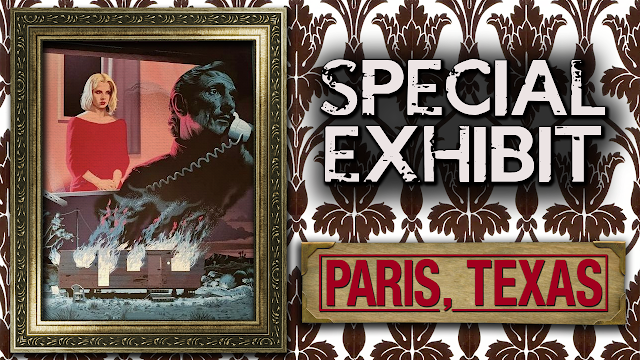Special Exhibit: PARIS, TEXAS
Year: 1984
Duration: 147 minutes.
Where to Watch: HBO Max, Amazon Prime.
A man walks alone on the Texan desert. He clearly has been doing this for some time, and he looks exhausted. Indeed, as soon as he arrives to a tiny inhabited area, he collapses. A doctor helps him, but the vagabond seems unable or unwilling to talk. However, he is carrying a phone number with him, that of his brother, who comes to his rescue despite not having heard from him in years.
We learn that the mysterious wanderer's name is Travis and that his brother Walt, and sister-in-law, have been taking care of his young son ever since Travis suffered a mental breakdown and walked out of their lives. Meanwhile, Travis' silence only breaks to utter his intended destination: "Paris". Not the one in France, of course, but Paris, Texas.
If the setup doesn't sound intriguing enough, add to that the fact that Travis is played by the late, great actor Harry Dean Stanton in what would go to become one of his iconic roles. Walt's part, on the other hand, is performed by Dean Stockwell.
This beloved neo-western road movie was directed by Wim Wenders and went to win the Palm de'Or at Cannes Festival, and though I'd normally would try to describe as little as I can beyond the first act, it's impossible to talk about this film without mentioning it's cornerstone piece, which also happens to be the final sequence. However, I don't think I'm really spoiling the film, as it's something that has to be experienced beyond my simplistic description.
It turns out that Travis' mental state is the result of separating from his much younger wife, played by Nastassja Kinski (daughter of famous German thespian Klaus Kinski). After a painful reconnection with their son, who barely remembers his father, he is also able to track down Jane, his wife, who is now a stripper.
Since she works at a peep show booth, and she's separated from her clients by a one-way mirror, Jane can't see Travis as he enters. Their communication is limited to a phone where Travis, with his voice distorted, tells her to stop stripping and instead listen to him as he tells a story that is clearly their own.
What follows is a spectacular conversation piece that is almost half an hour long and masterfully staged. Jane can't see him. He can, but opts to face away from the window at times. She remains silent most of the time, feelings imprinted on her face, then she goes to narrate her own part of the story. The frame composition is extraordinary, mostly static and with very infrequent cuts, but made dynamic by the expressive narrative and the characters' pain. Stanton and Kinski absolutely own the roles and turn this into one of the most powerful romantic scenes in cinema, despite the fact that they are technically apart and the disparity of their looks (Stanton is like crudely made out of aged wood, Kinski looks like a pretty porcelain doll).
It's a movie that captures a kind of beauty not often seen on screen, even when the storyline is devastating. It will feel slow to certain audiences, to be sure, but if you appreciate feelings over pace, this one will capture you.

Comments
Post a Comment